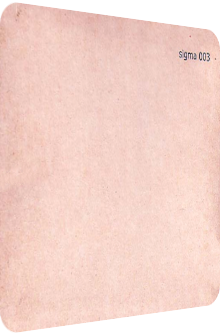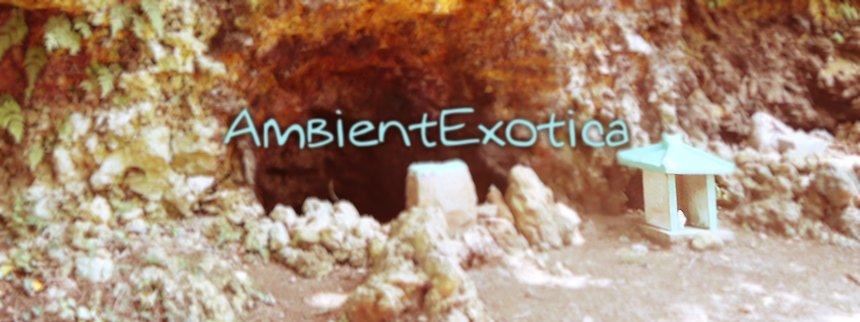
Minit
Music
1999
No, this is not the front cover of Chris Herbert‘s Mezzotint, but the typically minimal artwork that is the signature feature of the Sigma record label. The salmon-colored wall adorns the first album by the Sydney-based duo Minit which was formed by Jasmine Guffond and Torben Tilly in 1997. The album is simply called Music and is a heavenly piece for drone fans, even though the first 2 tracks don‘t exactly transport the ideal concept of heaven. Though strongly spine-tingling in parts, this is a mesmerizing release that is as minimal as it is laid back. While you won‘t hear ethereal orchestrations or super-thick synth washes, the 7 tracks of Music feature a distinct mood and happen to fit well together. This is heavily loop-based music with machine-like constructions akin to a heating room, but without clichéd clangs or hisses. There are usually no discernible melodies in the classic sense, and yet the audible artifacts are occasionally of a playful nature. The track titles themselves are vapid and even purposefully disorienting, displaying jumbled Roman numerals that have nothing to do with the chronological order of the tracks. Album title, track titles and front artwork hence give you the clue about what this release is really about.
II Variation is an almost 13 and a half minute long track with 3-second loops with disturbingly heater-like, claustrophoby-evoking qualities and added pulses that mark the repetition of the loop. Still, the setting is surprisingly fragile and soothing. After 5 minutes and 40 seconds, a tiny addition of a pulsating tone is introduced, but while it is perfectly perceptible, it blends perfectly with its surrounding. After more than 9 minutes, a frostily aquatic submarine-esque loop is added and remains the sole source of noise near the end of the track, when tremoling and chopped machine noises mark the end. IX is another long track with over 12 and a half minutes. It features an intermixture of clicks and pops with a glacial but quiet melody that is accompanied by loops of eerie engaged signals. Deeply pulsating bass lines rumble along next to modulated tone dial noises that do not sound clichéd at all but add a bold creepiness and dryness to the song. So far, the album is definitely a feast for Dark Ambient fans that prefer foggy atmospheres over gimmicky bursts of shocking noises. The short 3-minute piece X could be taken straight out of Aphex Twin‘s DrukQs, even though it precedes that album. Bright but sinister drones of quavering proportions meander along with a 4-note melody of chilliness. The 16 minute long VII, finally, moves into bright territory, leaving the dejected and machine-focused atmosphere behind. A friendly loop of a reduced synth pad melody is complemented with crystalline chirps and is not much later enhanced with echoey, backwards played vintage bliss. This flittering melody is sped up and perfected with warm sounds of middle wave transmitters and a fuzzy beat. The last minute is full of incisively-lit sparkles of high-pitched cymbals. The following II consists of muffled crackles and a variety of haunting synth loops and gurgling tremors of violin strings. The backcoupling of the pulses is especially defining for the track, as it feels menacing. III is a quickly-paced 2+ minute long vignette with bubbling pulses and hectical synth pads. It works quite well due to its shortness. The final VIII is yet another short track under the 3-minute mark and contains erupting pulses, buzzing howlings that could be of human origin, and warm, analogue pluckings on a synth pad.
While the last two tracks diminish the intensive formula of the previous songs and while the centerpiece VII is the scintillating pharos of an otherwise eerie and cold quagmire, Music is an album that feels coherent and serious in its vast use of reduced layers. While it evokes eeriness in the majority of its tracks, there is always a certain mechanical warmth to it – which is all the more surprising since mechanical sounds are usually used as clanging clicks and buzzes, but here, these loops radiate like heat sources and are therefore able to add warmth in a twisted way. Minit‘s formula of reduction is cushioned by soporifically rumbling machinery, and this unison isn‘t heard that often in Ambient tunes, let alone on whole albums. And still, the mystery and harshness remain important subcategories that prevent Music from being overly welcoming and arbitrarily soothing. An album of a distinct quality, but definitely not easily digestible for Ambient novices. Fans of Pjusk and Svarte Greiner should investigate it, as the mood is dusky and remote, but not overly daunting or gruesome.
Ambient Review 035: Minit – Music (1999). Originally published on Feb. 15, 2012 at AmbientExotica.com.
